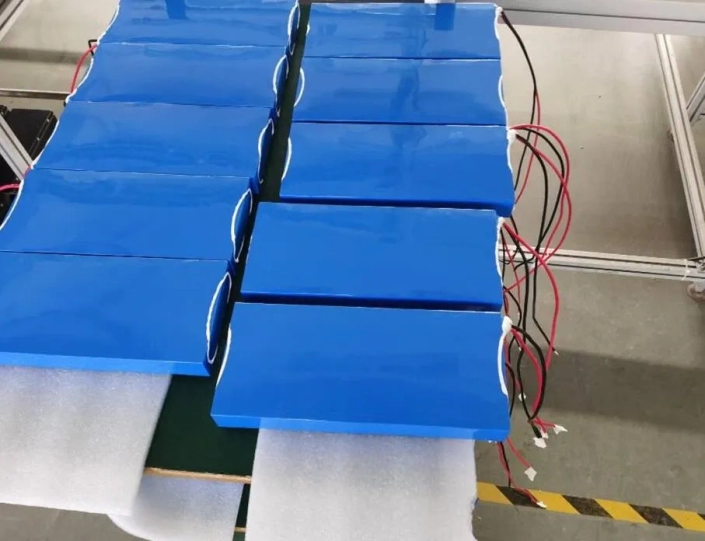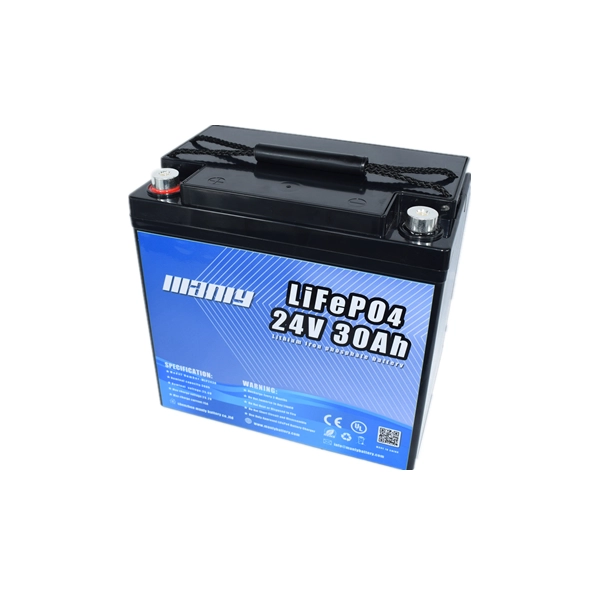More Products:
Austria customer orders 24V 30Ah LiFePO4 Battery for solar-powered camera
Manly Battery had the pleasure of working with a client from Austria who required 500 sets of 24V 30Ah LiFePO4 lithium batteries for their solar-powered cameras. These battery packs were equipped with a BMS (Battery Management System) that provided several protections, including overcharge, over-discharge, over-current, and short-circuit protection.Our team worked closely with the client to ensure that the battery packs were designed and manufactured to their exact specifications. The batteries were built to be highly efficient and reliable, with a long lifespan and a high cycle count.
The client required the battery packs to be robust and able to withstand harsh environmental conditions. To meet this requirement, we designed the battery packs using waterproof and durable materials, ensuring that they were resistant to extreme temperatures and challenging weather conditions.Throughout the project, we maintained constant communication with the client to ensure that they were satisfied with the quality and performance of the battery packs. We also provided detailed technical support to assist the client with the installation and operation of the batteries.
Overall, this project was a great success, and we were delighted to have played a role in supporting our client’s solar-powered cameras. We look forward to continuing to work with them and other clients to provide high-quality and reliable lithium battery solutions for a range of applications.
1. Introduction to Solar-powered Security Cameras
Installation of video surveillance systems for security purposes in outdoor settings requires two conditions for the cameras to function properly: a power source for the cameras and a network for video signal transmission. Network cameras can transmit signals through wired (Ethernet, fiber optic) or wireless (4G, 5G, Wi-Fi, or wireless AP) means. In addition to the conventional method of laying power cables, the power supply can also be considered by using solar energy + battery. For outdoor installation of security video surveillance systems without electricity or network, using solar-powered 4G monitoring cameras is an excellent choice.
With the widespread acceptance of environmental protection and low-carbon concepts, and the development of new energy technologies such as solar and wind energy, clean energy power supply has been widely applied. In the field of security, adopting solar power supply can free cameras from the constraints of wiring, make camera selection and installation more flexible, convenient, and quick, and save costs to some extent. Low power consumption is a crucial factor to consider when using solar panel + battery power supply for cameras. Of course, this factor should be considered during product design, which is not closely related to ordinary users. However, understanding this point is also beneficial for users when selecting and using solar-powered monitoring cameras.
When security cameras are running, the power consumption varies under different states, such as normal operation, standby, pan/tilt rotation, remote access connection, local TF card recording, and night-time supplementary light activation. Solar energy + battery power supply has limited capacity and is definitely not as good as constant electricity, so it is necessary to consider minimizing the power consumption of the camera in any operating state. In general, solar-powered cameras can be roughly divided into three power consumption modes: sleep mode, low power consumption mode, and full power consumption mode.
2.1 In sleep mode:
All camera functions basically stop running (remote access preview of camera images, local video recording storage, etc.), only keeping in touch with the network heartbeat, and the camera system remains in sleep mode, with typical power consumption of about 400mW1-700mW2.
2.2 In low power consumption mode:
the camera can be awakened from sleep mode to working mode through mobile app or triggering an alarm (PIR or microwave infrared human body induction, wake-up button, etc.).
To preview the real-time image of the camera remotely, a continuous network connection (Wi-Fi or 4G) is required, and the camera is in normal working mode, during which the power consumption of the camera increases.
However, if the camera does not have remote access and always stays in low power consumption mode, the deployment of monitoring loses its meaning when abnormal situations occur in the monitoring scene without local TF card recording or remote connection to NVR or back-end recording. The solution is simple: connect the camera to a human body induction alarm device. When a person appears in the monitoring scene, the alarm will be triggered (generally not triggered by ordinary movements, avoiding false alarms), and then the camera will be awakened to enter normal working mode (pushing alarm information or storing alarm video locally on the TF card).
Considering that the device’s power consumption needs to be low, the human body induction alarm devices for monitoring cameras are mostly PIR human body induction or microwave radar human body induction. To make the human detection accuracy higher, the PIR human body induction and microwave methods are sometimes used simultaneously, appearing on the same camera.
The camera is usually in a sleep mode, and it will be awakened when there is remote access from the app or someone appears in the monitoring scene, entering the normal function mode (according to the settings, there may be alarm information push or alarm recording stored locally). When the remote access connection of the camera is disconnected or the alarm information disappears for a period of time (which can be set for several seconds to several minutes), the camera will enter the sleep mode again, waiting to be awakened next time. It should be noted that under the low power mode, the camera cannot be set to 24-hour or timed recording, only alarm recording.
To avoid the camera remaining in sleep mode during initial configuration, a wake-up button is typically provided to bring the camera out of sleep mode and into normal working mode, making it easier to install and configure.
2.3 Full power consumption mode
Full power refers to the continuous normal working state of the camera, similar to a wired camera. At this time, all functions of the camera can be normally activated.
2. Application of 24v LiFePO4 battery in solar-powered camera
The use of 24v LiFePO4 battery in solar-powered surveillance cameras is becoming increasingly popular due to their numerous advantages. These batteries are a type of rechargeable battery that is commonly used in solar-powered applications because of their high energy density, long cycle life, and safety. In this article, we will discuss the advantages of using 24v LiFePO4 battery in solar-powered surveillance cameras.
2.1 Advantages of 24v LiFePO4 battery
High energy density: LiFePO4 batteries have a high energy density, which means that they can store a lot of energy in a small space. This makes them an ideal choice for solar-powered applications, where space is often limited.
Long cycle life: LiFePO4 batteries have a long cycle life, which means that they can be charged and discharged many times without losing capacity. This is important for solar-powered applications, where the batteries are frequently cycled.
Safety: LiFePO4 batteries are considered to be one of the safest types of lithium-ion batteries. They are less prone to overheating and are less likely to catch fire or explode compared to other types of lithium-ion batteries.
High discharge rate: LiFePO4 batteries can discharge at a high rate, making them an ideal choice for applications that require high power output.
Applications of 24v LiFePO4 battery in solar-powered surveillance cameras
Remote locations: Solar-powered surveillance cameras are often used in remote locations where access to power is limited. 24v LiFePO4 battery can be used to provide reliable power in these locations, allowing the cameras to operate continuously.
Off-grid installations: Solar-powered surveillance cameras are often used in off-grid installations where there is no access to the power grid. 24v LiFePO4 battery can be used to store the energy generated by the solar panels, providing a reliable source of power for the cameras.
Low maintenance: 24v LiFePO4 battery require little maintenance, making them an ideal choice for solar-powered surveillance cameras that are located in remote locations.
High discharge rate: The high discharge rate of LiFePO4 batteries makes them an ideal choice for solar-powered surveillance cameras that require high power output, such as those that are equipped with pan-tilt-zoom (PTZ) functionality.
2.2 Conclusion Of 24v LiFePO4 battery
The use of 24v LiFePO4 battery in solar-powered surveillance cameras offers numerous advantages, including high energy density, long cycle life, safety, and high discharge rate. These batteries are an ideal choice for solar-powered applications, where reliable and consistent power is essential. As solar-powered surveillance cameras become more popular, the use of 24v LiFePO4 battery is likely to become even more widespread.




